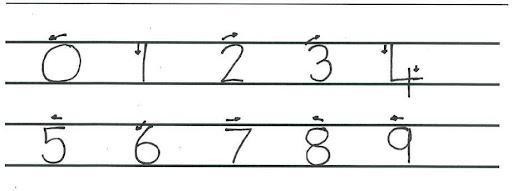Mathematics
At Bignold we use the White Rose Maths scheme to support our planning and teaching of Maths throughout school. Mrs Murphy is our Maths Subject leader.
White Rose Maths is a scheme that has been developed by a team of passionate maths teaching experts who are influenced, inspired and informed by the work of leading maths researchers and practitioners across the world. The scheme's fundamental belief is that 'everyone can do Maths', and it is designed to teach to the 'mastery' of concepts so pupils become confident and resilient mathematicians.
The Maths curriculum that is taught is centred around the White Rose Hub Mathematics scheme. It is supplemented with high quality resources, such as NCETM and NRICH, to ensure we provide pupils with deeper knowledge and understanding of mathematical procedures and related concepts.
Across Reception, KS1 and KS2 a Maths lesson is taught every day.
In Years R - 2, pupils also receive a Mastering Number session each day.
In Years 3 - 6, pupils have five minutes of daily arithmetic at the start of Maths lessons. This gives them opportunities to practice their fluency and confidence with the 4 operations, as well as fractions, decimals and percentages.
In these year groups pupils also have a daily 'Maths Skills' session where they have opportunities to revisit and retrieve prior learning and further embed mathematical concepts.
CPA Approach (Concrete, Pictorial, Abstract)
The 'CPA' approach is a key element of how Maths is taught at Bignold, and it is integral how children develop mastery of concepts in Mathematics. Throughout our day to day lives Maths is represented by objects, pictures, words, numbers, symbols and the 'CPA' approach provides pupils with opportunities to explore new learning, deepen understanding and cement concepts to provide 'mastery'. This is used in all year groups throughout the school.
With the 'CPA' approach pupils physically represent mathematically concepts first. They then use pictures to demonstrate and visualise abstract ideas before finally using numbers and symbols to explain these concepts. By moving through the stages of 'CPA' pupils will have gained an understanding of how the abstract concepts 'look' and what they represent, meaning they can then apply this knowledge with confidence across a range of different Mathematical problems.
Concrete – Pupils have the opportunity to use concrete objects and manipulatives to help them understand and explain what they are doing.
Pictorial – Pupils build on this concrete approach by using pictorial representations. These representations can then be used to reason and problem solve.
Abstract – With the foundations firmly laid, pupils are be able to move to an abstract approach using numbers and key concepts with confidence.
Fluency, Reasoning and Problem Solving
Fluency, reasoning and problem solving are key elements found in every Maths lesson. The teaching of these supports and challenges pupils in their mastering of concepts and becoming efficient Mathematicians.
Fluency – Pupils should be able to recall and apply mathematical knowledge rapidly and accurately. Pupils should be able to move confidently between contexts and representations, recognise relationships and make connections in mathematics. This will help pupils develop a deep conceptual understanding.
Reasoning – Reasoning is pupils being able to explain their Mathematical learning, how they calculated an answer and how they know it is right. The teaching, understanding and reinforcement of key Mathematical vocabulary is necessary for this.
Problem Solving – Problem solving is when pupils identify, understand and apply relevant mathematical principles and make connections between different ideas. Pupils require opportunities to demonstrate their understanding of concepts through different contexts to provide them with a richer and deeper learning experience. Pupils will combine different concepts to solve more complex problems and apply knowledge to real life situations.
Key Representations
The teaching of Maths at Bignold is centred around key representations you will see in Maths lessons across the school.
Part Whole Model
Ten Frame
Base Ten
Place Value Counters
Arrays
Bar Model
Number Line
Calculation Policy
Our Calculation Policy (available below) details how the main four operations - addition, subtraction, multiplication, division - are taught throughout the school.
This is a progressive document, allowing teachers to meet children at the point of their ability.
Number Formation
Neat, presentable and accurate number formation is important at Bignold.
This image outlines how pupils are taught to form the digits 0-9:

Learning our Times Tables

Are you a Time Tables Rock Star?
Time Table Rock Stars is a fun and challenging game designed to help pupils master their time tables. When it comes to time tables speed and accuracy are important, and this is the main focus of this fun and engaging game!
Currently, pupils in Years 2-6 have accounts, and you can download it free on any app store and play at home. If you need a log in for your child, please speak to your child's class teacher.
Time Tables Rock Stars Website
